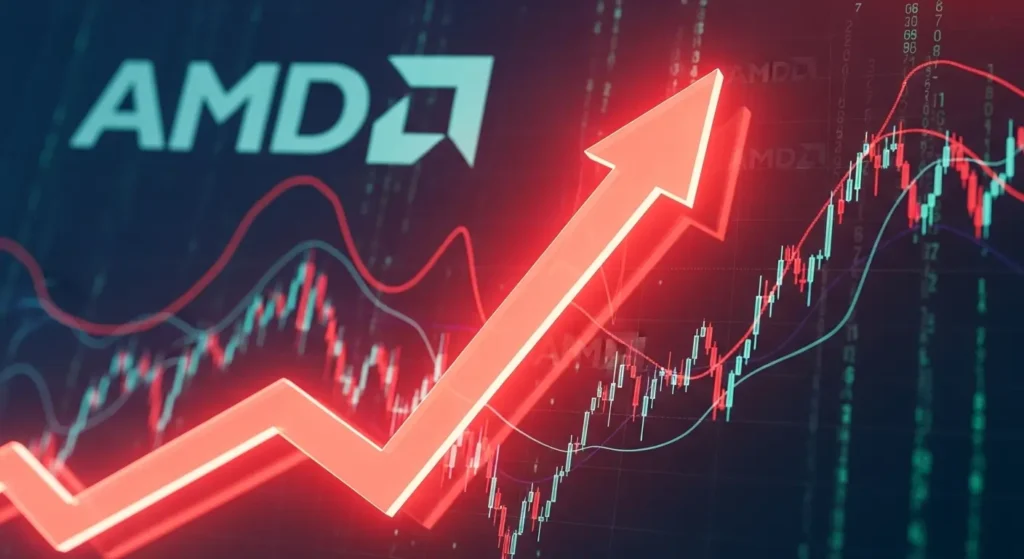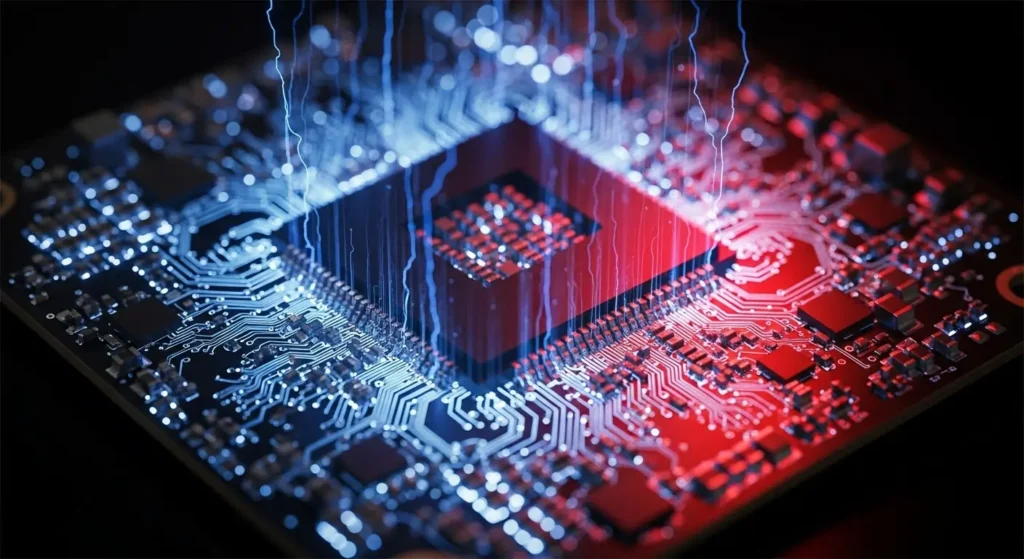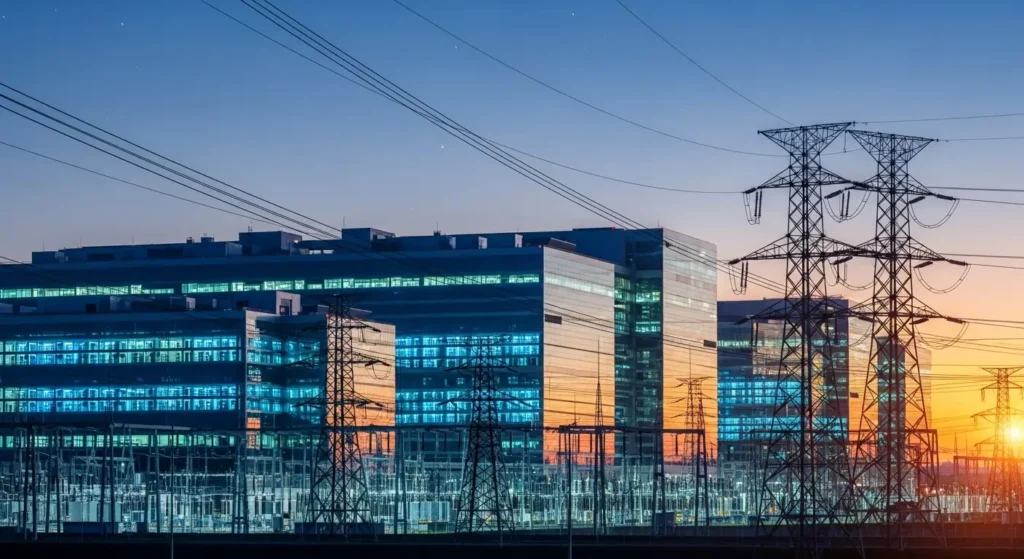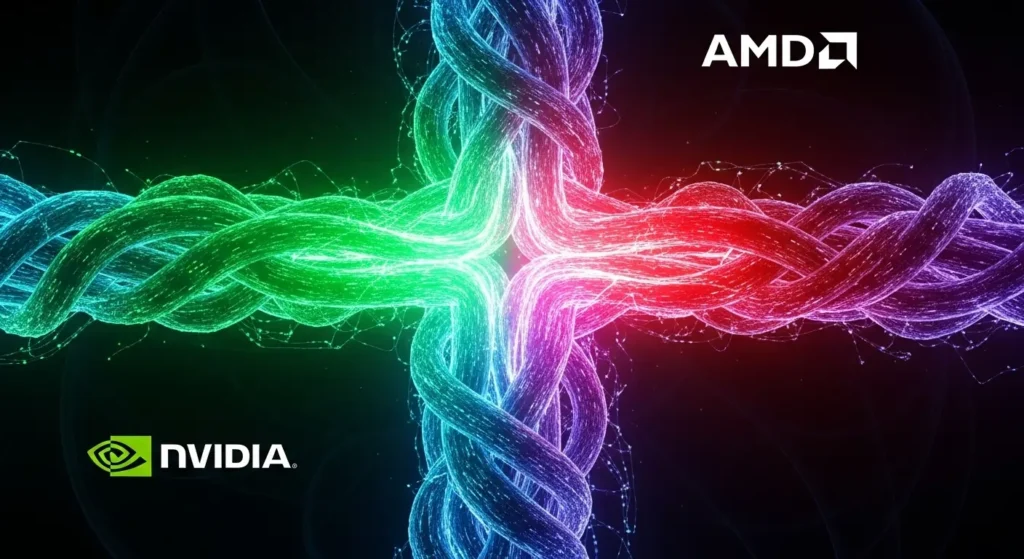AMD and OpenAI announce groundbreaking 6-gigawatt partnership with MI450 GPUs starting 2026, generating tens of billions in revenue for AI infrastructure expansion.
Table of Contents
AMD and OpenAI Strategic Partnership Announcement Reshapes AI Infrastructure Landscape
The artificial intelligence industry witnessed a seismic shift today as AMD and OpenAI unveiled their groundbreaking strategic partnership.
This historic AMD and OpenAI Strategic Partnership Announcement establishes a multi-year agreement to deploy 6 gigawatts of AMD Instinct GPUs, beginning with a massive 1-gigawatt rollout in the second half of 2026.
The collaboration represents a potential tens of billions of dollars in revenue for AMD and marks a transformational moment in AI infrastructure development.
This partnership builds upon existing collaborations between the companies, extending their work with AMD’s MI300X and MI350X series to future generations of AI compute technology.
The agreement positions AMD as a core strategic compute partner for OpenAI while diversifying the AI giant’s hardware supply chain beyond traditional vendors.
Strategic Agreement Details and Financial Impact

The AMD and OpenAI Strategic Partnership Announcement encompasses several groundbreaking elements that distinguish it from typical supplier relationships.
OpenAI will initially deploy AMD Instinct MI450 Series GPUs in a 1-gigawatt configuration, with plans to scale up to the full 6-gigawatt capacity over multiple years.
As part of the strategic alignment, AMD has issued OpenAI a warrant for up to 160 million shares of AMD common stock, structured with milestone-based vesting.
The warrant allows OpenAI to purchase shares at one cent each, potentially granting the AI company approximately 10% ownership in AMD.
Vesting occurs progressively as deployment milestones are achieved, AMD reaches specific share-price targets, and OpenAI meets technical and commercial benchmarks required for large-scale GPU deployment.
AMD’s stock surged over 24% in premarket trading following the announcement, reflecting investor confidence in the partnership’s potential.
Jean Hu, AMD’s EVP, CFO and treasurer, emphasized that the agreement.
“is expected to be highly accretive to AMD’s non-GAAP earnings-per-share”.
AMD MI450 Series GPUs

he AMD Instinct MI450 Series represents AMD’s next-generation AI compute architecture, designed to challenge market leaders in both training and inference workloads.
AMD executives have positioned the MI450 as their “no asterisk generation” aimed at delivering leadership performance across AI applications.
Forrest Norrod, AMD’s executive vice president, compared the MI450 launch to AMD’s “Milan moment” in 2021, when EPYC server CPUs helped break Intel’s server market dominance.
He declared the MI450 will be “the best training, inference, distributed inference, reinforcement learning solution available on the market”.
The MI450 architecture incorporates significant silicon and software improvements, alongside full system-level support optimizations.
AMD is also developing rack-scale solutions, including the Instinct MI450X IF64 and MI450X IF128 configurations with 64 and 128 GPU packages respectively, designed to compete directly with Nvidia’s rack-scale offerings.
Market Positioning Against Industry Leaders

This partnership arrives at a critical juncture in the AI chip market, where Nvidia currently dominates with approximately 80-90% market share.
AMD’s current AI GPU market share remains below 10%, but the company has shown significant growth momentum with its data center GPU segment expanding 179% between 2023 and 2024.
The AMD and OpenAI Strategic Partnership Announcement follows closely behind OpenAI’s September agreement with Nvidia for a $100 billion partnership to deploy 10 gigawatts of Nvidia systems.
This dual-vendor approach allows OpenAI to diversify its supply chain while maintaining access to cutting-edge AI compute capabilities from multiple sources.
Sam Altman, OpenAI’s co-founder and CEO, emphasized the strategic importance:
“AMD’s leadership in high-performance chips will enable us to accelerate progress and bring the benefits of advanced AI to everyone faster”.
Competitive Implications and Industry Response
The announcement represents AMD’s most significant challenge to Nvidia’s AI chip dominance to date.
AMD CEO Lisa Su recently claimed that AMD’s latest MI350 chips “match the performance of the significantly more expensive and complex” Nvidia GB200 while offering “40% more tokens per dollar than competing solutions”.
This multi-generational collaboration extends beyond hardware supply to include shared technical expertise for optimizing future product roadmaps.
The partnership encompasses rack-scale AI solutions and extends to upcoming generations of AMD GPUs, creating a comprehensive technology alliance.
Greg Brockman, OpenAI’s co-founder and president, highlighted the collaborative approach: “Building the future of AI requires deep collaboration across every layer of the stack.
Working alongside AMD will allow us to scale to deliver AI tools that benefit people everywhere”.
Infrastructure Scaling and Global AI Capacity

The 6-gigawatt deployment scale represents a massive expansion of global AI compute capacity.
For context, this power requirement could supply electricity to all homes in Massachusetts, underscoring the enormous energy demands of next-generation AI infrastructure.
OpenAI’s total infrastructure strategy now encompasses over 23 gigawatts across multiple partnerships, including the 10-gigawatt Nvidia agreement and the 6-gigawatt AMD deployment.
This represents nearly $1 trillion in new infrastructure investment committed within recent weeks.
The first AMD systems will be deployed in new data centers separate from OpenAI’s previously announced facilities in Texas, New Mexico, Ohio, and other Midwest locations.
These dedicated AMD-powered facilities will support OpenAI’s next-generation AI models and expanded compute requirements.
Supply Chain Diversification and Risk Mitigation

The AMD and OpenAI Strategic Partnership Announcement addresses critical supply chain vulnerabilities in the AI ecosystem.
By establishing AMD as a core strategic compute partner, OpenAI reduces its dependence on single-vendor solutions while ensuring access to high-performance AI hardware.
This diversification strategy provides OpenAI with greater pricing flexibility and supply security as global demand for AI chips continues to outpace production capacity.
The partnership also enables OpenAI to influence AMD’s future product development more directly, ensuring upcoming generations align with generative AI requirements.
AMD’s Mat Hein, strategy chief, predicted that “others will follow suit because this is truly a trailblazer in the industry that holds considerable sway over the wider ecosystem”, suggesting the partnership may catalyze similar agreements across the AI industry.
Tesla’s AI Chip Strategy Shift Prioritizes Inference Power
Future Roadmap and Technology Evolution
The collaboration extends beyond immediate hardware deployment to encompass multi-generational technology development.
AMD and OpenAI will share technical expertise to optimize product roadmaps, building upon their existing collaboration that began with MI300X processors and continued through MI350X series.
This technical partnership positions both companies to advance AI model training, inference capabilities, and distributed computing architectures.
The shared development approach ensures AMD’s future GPU generations will be optimized for the specific computational patterns and memory requirements of large language models and multimodal AI systems.